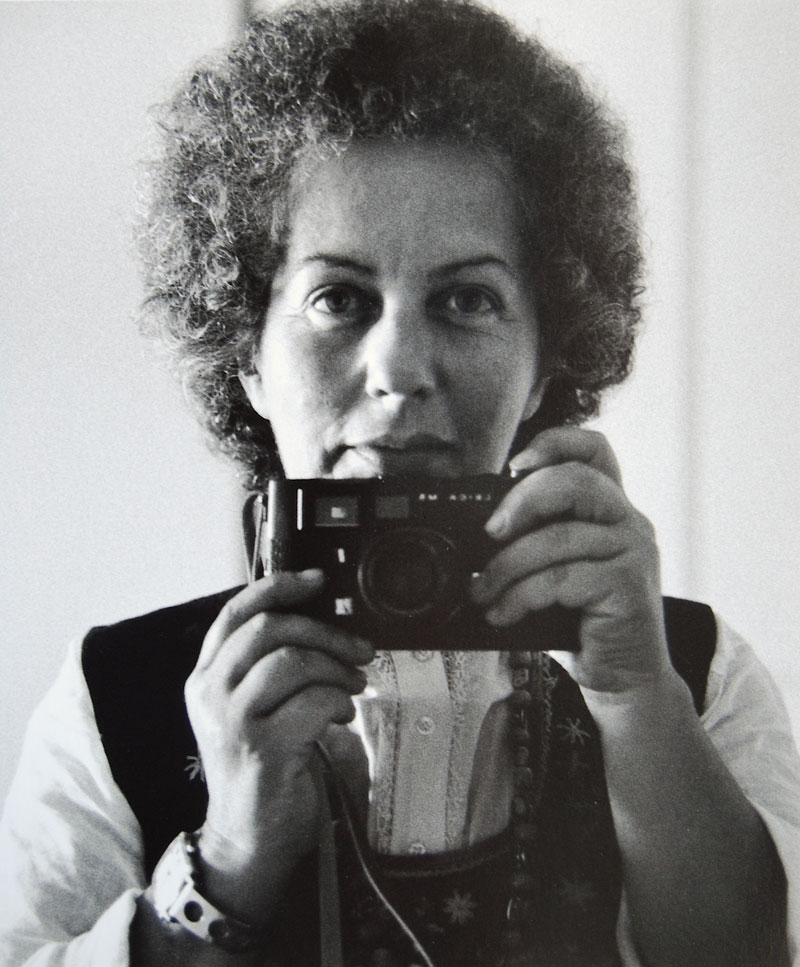“Lisetta Carmi. Molto vicino, incredibilmente lontano” a Genova
The exhibition Lisetta Carmi. Molto vicino, incredibilmente lontano has been announced for next autumn at Palazzo Ducale. A journey that starts from Genoa and Italy to tell, with her sharp and clear vision, distant realities and worlds in transformation, with unpublished colour images that offer a new interpretation of her most famous black-and-white photographs.
Genoa emerges in its unexpected facets, a city where Lisetta Carmi for the twenty years of her photographic career has always printed and developed her images telling from this place her vision of the world and the people she chose to portray, as the famous photographs of the port, which will be accompanied by unpublished images of the registry office and the political and social life of the city.
Leggi tutto
Also on display at Palazzo Ducale are the images from the transvestites series from the 1960s, published in 1972, which caused a sensation and influenced the photographic research of many international artists, not only in black and white but also in color. Another series is the unpublished eroticism and authoritarianism in Staglieno, where the famous Genoese cemetery is transformed under the photographer’s lens into a portrait of bourgeois 19th-century society and the eroticism associated with funerary monuments.
Genoa has chosen to honor this disruptive figure, a photographer and artist who was central to the history of post-war photography and whose career developed over twenty years in her hometown.
Lisetta Carmi. Molto vicino, incredibilmente lontano is curated by Giovanni Battista Martini, expert in contemporary photography and curator of the Lisetta Carmi archive, who has written and conceived numerous exhibitions of the artist in recent years, and by Ilaria Bonacossa, curator of contemporary art and director of Palazzo Ducale Genova. The exhibition is promoted and organized by Palazzo Ducale Fondazione per la Cultura Genova and Civita Mostre e Musei.
Lisetta Carmi: biography
Lisetta Carmi was born in Genoa on February 15, 1924, into a wealthy bourgeois family. Due to the racial laws, in 1938 she was forced to leave school and take refuge with her family in Switzerland. In 1945, at the end of the war, she returned to Italy and graduated from the Milan Conservatory. In the following years, she had a series of concerts in Germany, Switzerland, Italy, and Israel. In 1960, she ended her concert career and, by chance, turned to photography, which soon became her profession. For three years, she worked as a photographer at the Teatro Duse in Genoa. She accepted several assignments from the Municipality of Genoa, producing a series of photo reportages depicting the city’s various social realities and problems, such as hospitals, the registry office, the historic center, and the city’s sewers.
After conducting a comprehensive study of the Port of Genoa in 1964, which later became a traveling exhibition, she continued a reportage on Sardinia that had begun in 1962 and would be completed in the 1970s. She later traveled to Paris, and from this stay emerged the volume Métropolitain, an artist’s book containing a series of photographs taken in the Paris metro. In 1965, her most famous project took shape, which in 1972 became a book, dedicated to the transgender community of Genoa. In 1969, she travelled for three months in Latin America and, the following year, to Afghanistan and Nepal. In 1971, she bought a trullo in Cisternino, Puglia. On March 12, 1976, in Jaipur, India, she met Babaji Herakhan Baba, the Mahavatar of the Himalayas, an encounter that would radically transform her life. That same year, she was in Sicily on assignment for Dalmine for the book Acque di Sicilia, which featured images of the region’s landscape and social reality, accompanied by a text by Leonardo Sciascia. Over the years, she created a series of portraits of artists and cultural figures of the time, including Judith Malina, Joris Ivens, Charles Aznavour, Edoardo Sanguineti, Leonardo Sciascia, Lucio Fontana, César, Carmelo Bene, Luigi Nono, Luigi Dallapiccola, Claudio Abbado, Jacques Lacan, and Ezra Pound, whose famous portraits she took in 1966 at the poet’s home in Zoagli, Liguria.
Leggi tutto
In the years that followed, Lisetta Carmi devoted herself entirely to the construction of the Bhole Baba Ashram in Cisternino and to spreading the teachings of her master. In 1995, after 35 years, she reunited with her former piano student, Paolo Ferrari, and began a collaboration of philosophical-musical study with him.
Lisetta Carmi passed away—or, as she would say, left her earthly body—on July 2, 2022, in Cisternino.
Lisetta did not photograph to tell stories; she photographed to understand, using photography as a key to open doors and enter places where no one else could.


